
9 Most Charming Small Towns in England
The history of England is far-reaching, with iconic landmarks such as Big Ben and Stonehenge, and significant artistic contributions including Shakespeare and the Beatles.
The country has a simple, peaceful beauty, not easily found elsewhere. England’s serene countryside landscapes are truly among Europe's most memorable views.
Their towns and cities combine over a thousand years' worth of history with contemporary culture in distinct ways that reflect its deep-rooted identity and legacy. Navigating through these towns can be hard given their sheer number, since so many places are filled with character uniquely their own. The following destinations showcase some of the absolute finest of English charm.
Whitby
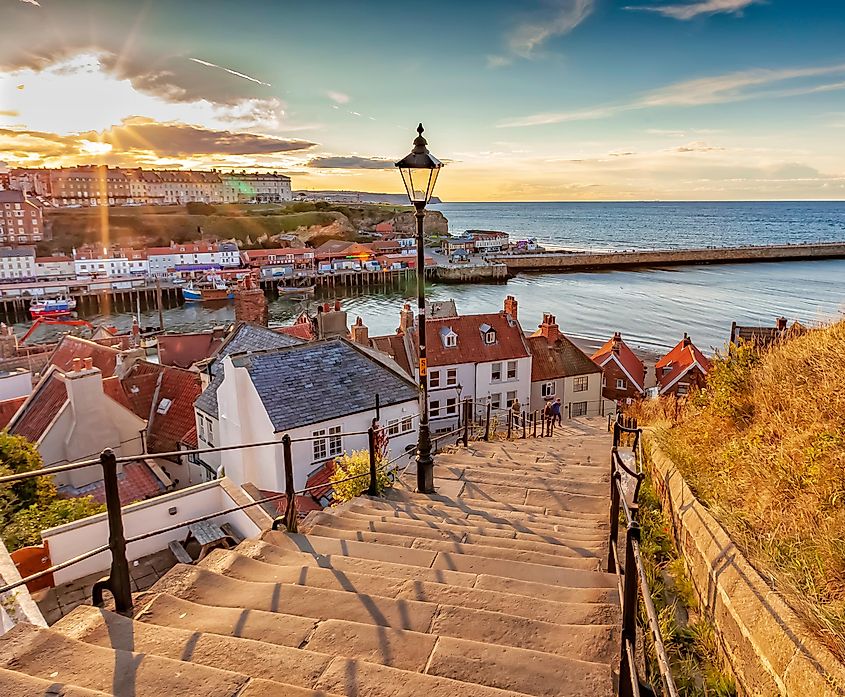
On the edges of the cliffs overlooking the North Sea, the ruins of Whitby Abbey stand watch over the town of Whitby.While the land on the cliffsides once had an Anglo-Saxon monastery built in the 7th century, it now houses the skeleton of a 13th-century church.
The old town is a maze of narrow, cobbled streets, including the “199 Steps,” which lead up to Whitby Abbey and St. Mary's Church. Climbing these steps offers an excellent vantage point to enjoy the town and harbor's scenic beauty. Along the dockside, old stone buildings line the streets, towering over boats that bob rhythmically with each wave.
Whitby shares a history with the famous explorer Captain James Cook. A museum dedicated to this historic figure is housed in a 17th-century building that once sheltered a young Cook. Whitby is also known for its jet, which is essentially fossilized wood that has been unearthed in the region for centuries. It became especially popular during the Victorian era and was used in jewelry as tokens of remembrance.
Castle Combe
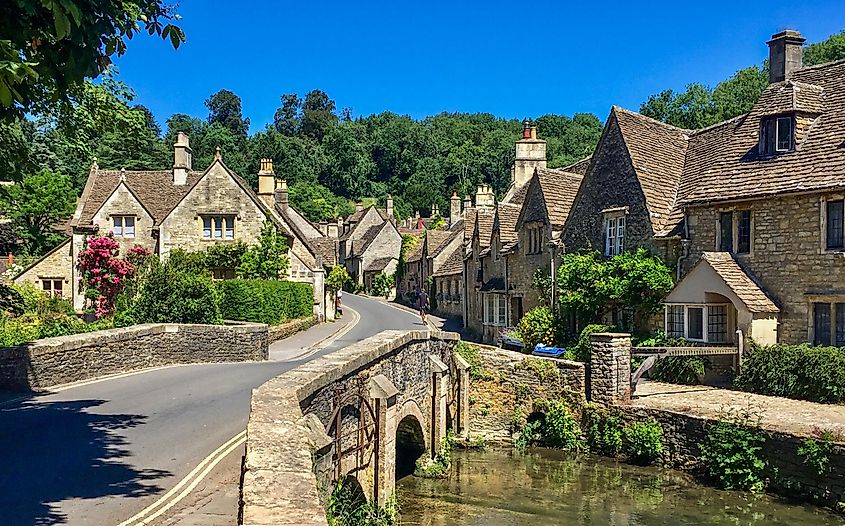
Castle Combe is set in the rolling hills of the English countryside, with peaceful walking trails weaving through the woodlands of the west of England.
While its name suggests it is home to a massive castle, the title actually refers to a castle that no longer exists. The castle, now lost to history, was located on a nearby hill and was built by Normans shortly after the Conquest of England.
The town is known for its medieval houses built from local Cotswold stone, still featuring their original elements like traditional thatched roofs, arranged in the town's original medieval street layout. In fact, the village layout has remained mostly unchanged since the 15th century.
You might have seen some of this beautiful town in the movies. It has been used as a filming location for films like "War Horse" and "Stardust" because of its well-preserved appearance.
If you visit Castle Combe, be sure to check out St. Andrew's Church, a historic Anglican church famous for its 15th-century faceless clock. The clock is one of the oldest functioning medieval clocks in the country.
Arundel
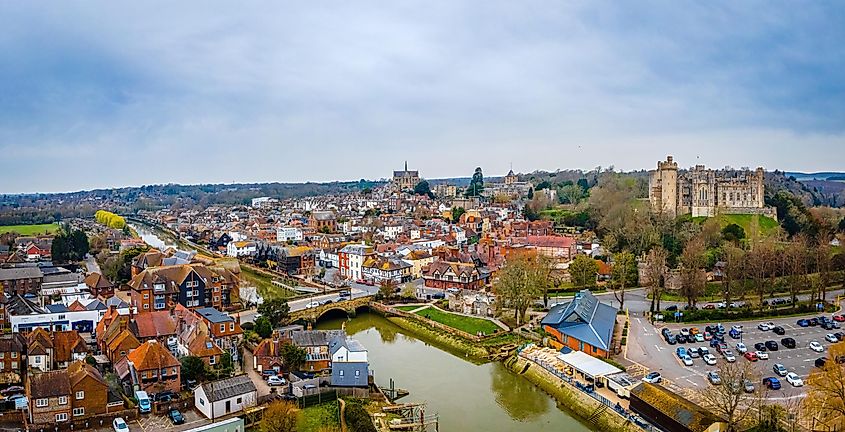
Strolling the core of Arundel feels like thumbing through a visual chronicle of England over the years; every road and structure has its own story to tell.
Arundel Castle, the ancestral home of Norfolk's Dukes for over eight and a half centuries, is a striking medieval fortress. This castle is renowned for its surrounding gardens and its collection of antiques, including ancient manuscripts and paintings.
Just a brisk walk from the castle you can find the Arundel Cathedral. Constructed in the 19th century, its weather-beaten white stone exterior and prominent spire make it instantly recognizable.
Every year, the cathedral hosts the Carpet of Flowers event during the Feast of Corpus Christi, showcasing intricate flower arrangements inside the large structure.
If England's rural landscapes are calling to you, don't miss a visit to Arundel Wetland Centre. This nature reserve is home to both rare and exotic birds and plays a key role in conservation efforts.
St. Ives

Forget about the stereotype of a dreary rainy England in St. Ives. It exudes a certain Mediterranean vibe, highlighted by clear waters and extensive stretches of golden sand.
The town has some great beaches, like Porthmeor Beach, popular among surfers, and the more tranquil Porthminster Beach. In the heart of the town, fishing vessels gently sway on the harbor's waves while eateries and stores decorate the roads alongside its edges.
St. Ives's narrow streets, known as "Downalong", weave through town, with a somewhat labyrinthine layout. Remember to bring a map.
The Sloop Inn, one of England's oldest pubs, dates back to around 1312. This tavern is more than just a place for quality beer; it represents the rich history of St. Ives. Just watch your head on the low ceilings.
Atop a small, grassy headland called “The Island,” you can find St. Nicholas Chapel, a tiny medieval building. Up here you will get a touch of local history with the chapel, and the great views do not hurt either.
Shaftesbury

Perched atop a hill with views over the Blackmore Vale, Shaftesbury stands as one of England's oldest, and most elevated, towns.
Around town, the beautiful countryside calls out, giving the perfect place to take a long walk under the calming English sun.
The town has an ancient abbey, appropriately named Shaftesbury Abbey. It was founded in 888 by Alfred the Great. It was an important religious center until its dissolution in 1539 during the Reformation.
The ruins of the abbey and the abbey museum are now important historical and cultural attractions, drawing visitors who are interested in exploring the remnants of early medieval architecture and learning about the abbey's storied past.
One of Shaftesbury's most famous sights is Gold Hill, a steep cobbled street lined with traditional thatched cottages. It got a lot of fame through a bread advertisement back in the 70s, directed by Ridley Scott, featuring a boy pushing his bike up the sheer hill.
Haworth
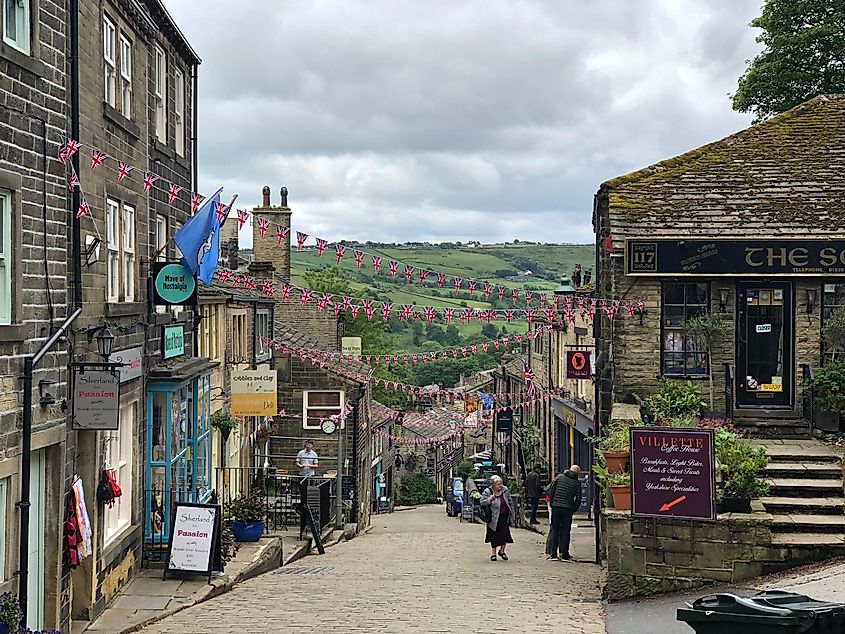
Haworth is known for both its beauty and fame. Its fame arises from its connection to the Brontë sisters—Charlotte, Emily, and Anne. The town's natural beauty is enhanced by the nearby Yorkshire Moors.
The areas close to the town offer perfect settings for exploring and enjoying relaxing walks. The Brontë sisters' historic home, which is also the birthplace of many of their novels, operates as the Brontë Parsonage Museum. It is a popular destination for literature fans.
For anyone who admires their work, this site is a must-visit. The main street of the village is well-known for its steep slopes, cobblestone charm, and historic public houses.
This street has retained much of its 19th-century character, providing a glimpse into the era of the Brontës. Take a ride back in time on the Keighley and Worth Valley Railway, a functional heritage steam train. It runs near Haworth and through the heart of the English countryside, offering a scenic journey.
Rye
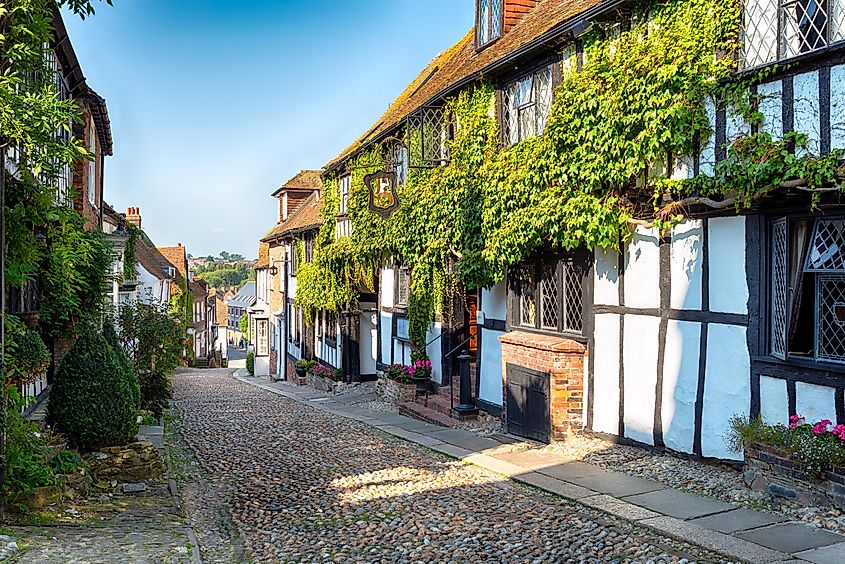
Down in East Sussex, Rye is located two miles from the sea, near the confluence of the Rother, Tillingham, and Brede Rivers. It exudes the quintessential charm of a slow-paced, peaceful English town.
As you walk along its stone-paved lanes, you'll notice its well-preserved historic structures. Distinguished stone buildings line the streets, some dating back to the 15th century, showcasing Rye's rich history.
One of the town's notable features is Mermaid Street, famous for its unique buildings with whimsical names like "The House with Two Front Doors" and "The House Opposite." Among these is the Mermaid Inn, a historic pub with a reputation for secret tunnels once used by smugglers.
A prominent monument is St. Mary's Church, a 12th-century edifice that symbolizes Rye's extensive past. Its weathered stone exterior and stunning stained-glass windows make it a picturesque reminder of the town’s heritage.
Bibury
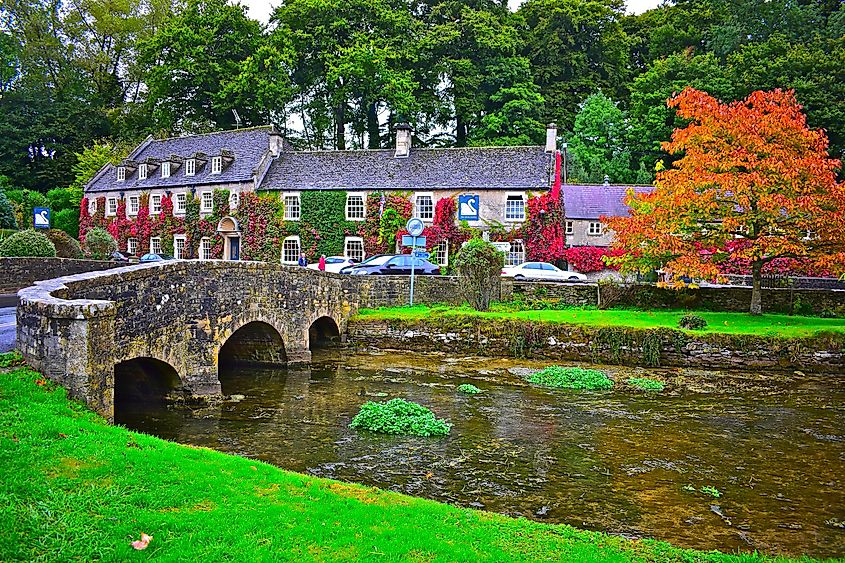
Bibury is known all over England for its stone cottages and calming rural setting.
The cottages are made of honey-colored Cotswold stone, with steep, tiled roofs. Parts of town look like nature is trying to reclaim the buildings, as bush and overgrowth rise up and between the old cottages.
This locale boasts some of the finest examples of English countryside design. Arlington Row and its 14th-century cottages are among the country's most photographed images. An enduring reminder of England's history, St. Mary's Church remains, its origins reaching back into the Saxon era.
Over centuries, the church has seen constant change, with enhancements stretching from the era of Norman rule to our modern day.
For all those fish fans out there, the Bibury Trout Farm in England, established in 1902, is one of the oldest fisheries in England. It operates as a business and offers fishing and educational activities about trout breeding.
The town is part of the Cotswolds Area of Outstanding Natural Beauty. Efforts are ongoing to preserve the historic and environmental splendor of the area.
Weymouth
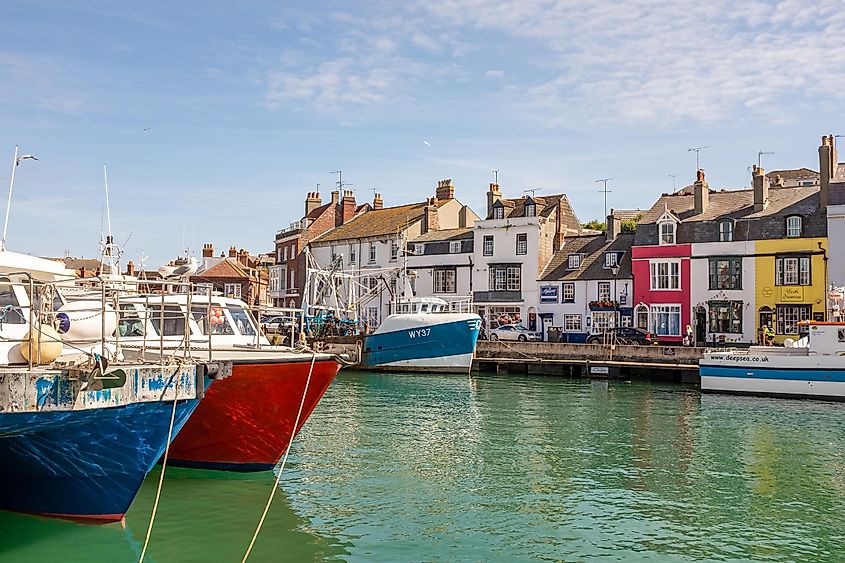
Found on the Jurassic Coast in southern England, a UNESCO World Heritage site, Weymouth is known for its stunning coastal scenery.
Renowned for its unique geological history, the shoreline showcases ancient rock formations from spans of millions of years, including the Triassic, Jurassic, and Cretaceous periods.
Near town, Weymouth Beach offers an expanse of amber-colored sand and calm seas - ideal for swimming.
Go down to the harbor for a good spot to people-watch or try some of the fantastic seafood restaurants. The brightly painted buildings by the water are a nice photograph to take home too.
Like many towns in England, Weymouth has important historical landmarks to see. A fortress from the 19th century designed to protect Portland Harbour, known as Nothe Fort, now functions as a museum. It offers a glimpse into military history and provides views of the Jurassic Coast and the Isle of Portland.
In Conclusion
From ancient abbeys with timeless appeal to quiet, peaceful pastures, England's towns are filled with beautiful and historic spots to explore.
The foundations of the country stretch back farther than the Roman Empire, and each successive culture to arrive in England has added something to the great English story.
When you walk through the trails that crisscross the country, every rock and building block has a thousand stories to tell.
Bring a journal and camera, because when you get to England, you will get a lifetime of memories in return.











